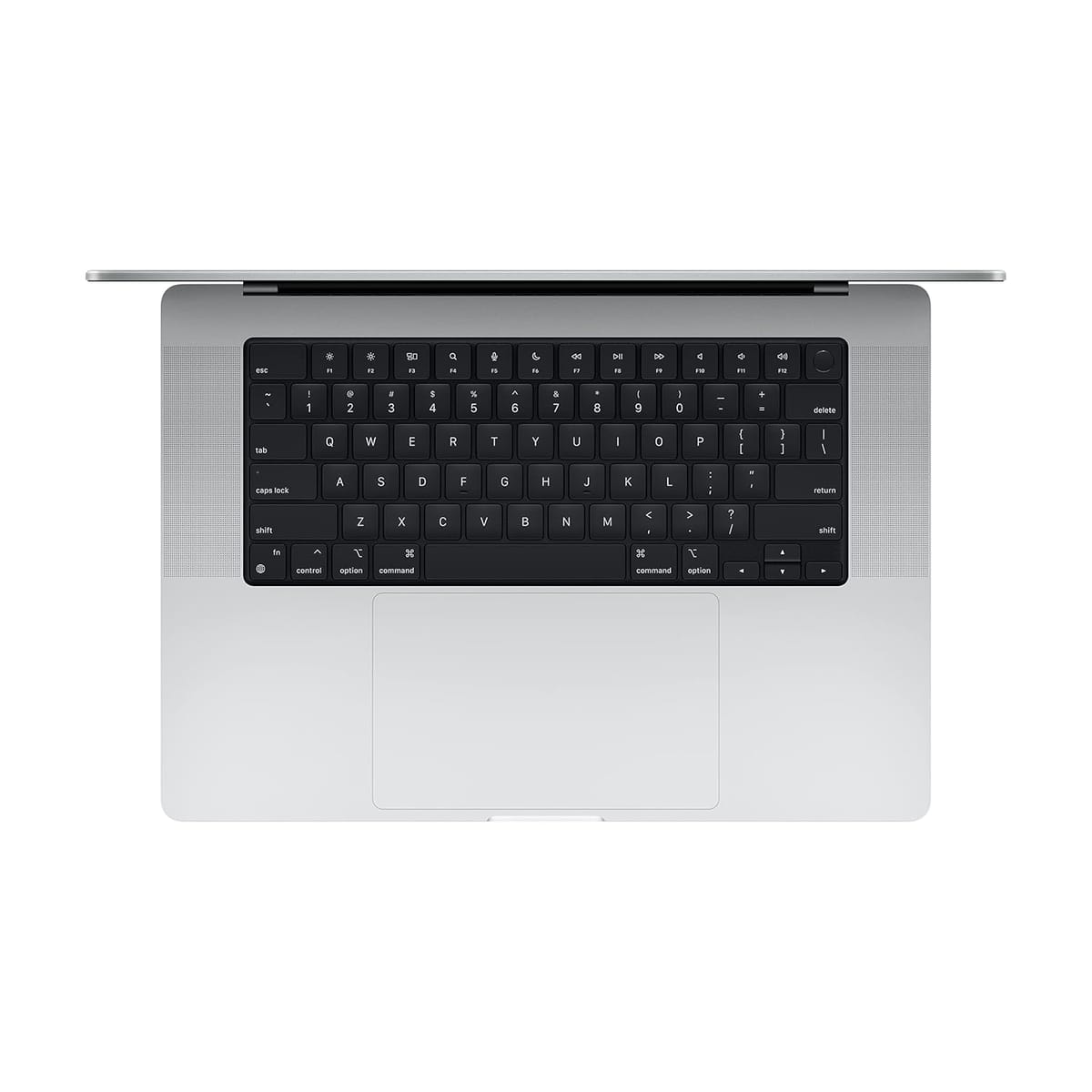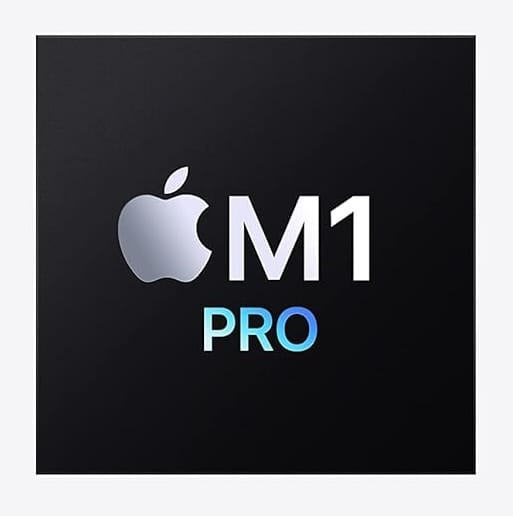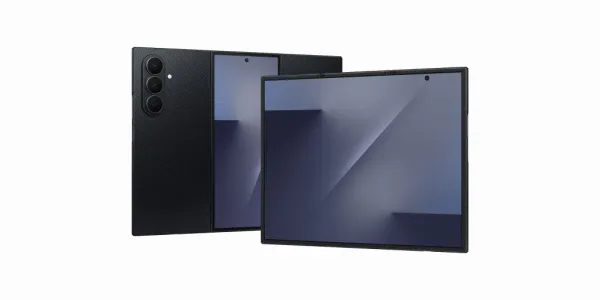MacBook Pro 16" M1 Pro (A2485) – A True Desktop-Class Laptop That Redefined Performance
MacBook Pro 16" M1 Pro, 16GB RAM, 512GB SSD, 16.2" Liquid Retina XDR, 120Hz. Ultimate Apple Silicon laptop for creatives and professionals.

Introduction
In 2021, Apple unleashed a laptop that changed the rules of the game forever: the MacBook Pro 16" with the M1 Pro chip (A2485). Up until then, professionals had grown accustomed to relying on heavy desktop-grade machines or Windows workstations to handle serious workloads such as video editing, 3D rendering, software development, and scientific computing. Apple promised something radical: desktop-class power in a thin and relatively light laptop, with unmatched efficiency and battery life.
The arrival of the M1 Pro was not just another processor upgrade; it was the first real statement from Apple that its own silicon could defeat even desktop-grade Intel and AMD CPUs while consuming a fraction of the power. The MacBook Pro 16" M1 Pro quickly became the laptop of choice for creative professionals, coders, researchers, and business leaders who wanted a device that didn’t compromise between mobility and performance.
Even today, in 2025, this machine holds strong — especially if you’re considering a refurbished MacBook Pro 16" M1 Pro. Let’s dive deep into its specifications, design, display, performance, battery life, connectivity, relevance today, comparisons with newer models (M2 Pro, M3 Pro, and M4 Pro), and why refurbished still makes perfect sense.
Specifications at a Glance
- Model: MacBook Pro 16" (A2485)
- Processor: Apple M1 Pro (1st Gen Apple Silicon Pro)
- CPU: 10-core (8 performance + 2 efficiency)
- GPU: Integrated 16-core GPU (Apple-designed)
- Memory: 16GB Unified LPDDR6 RAM
- Storage: 512GB SSD
- Display: 16.2-inch Liquid Retina XDR, 3456×2234 resolution, ProMotion 120Hz refresh rate
- Dimensions: 35.57 × 24.81 × 1.68 cm
- Weight: ~2.1 kg
- Ports: 3× Thunderbolt 4 (USB-C), HDMI, SDXC card reader, MagSafe 3, 3.5mm headphone jack
- Touchscreen: No
Design & Build Quality
The MacBook Pro 16" M1 Pro carries Apple’s iconic industrial design but with subtle changes that signaled a new era. Gone were the thinner, thermally constrained chassis of Intel MacBooks. Instead, Apple introduced a slightly thicker, sturdier body to accommodate the new Apple Silicon architecture, improved cooling, and a bigger battery.
- The unibody aluminum chassis offers durability and a premium feel.
- At ~2.1 kg, it’s portable for a 16-inch powerhouse, especially when compared to Windows workstations that can weigh significantly more.
- The return of MagSafe 3 was a welcome addition for professionals, alongside ports like HDMI and an SD card reader that eliminated dongle-dependency.
- The scissor-switch Magic Keyboard replaced the problematic butterfly keyboard, making typing comfortable and reliable for long work sessions.
This design blends classic Apple minimalism with professional practicality, making it timeless even in 2025.
Display – Liquid Retina XDR Magic
The 16.2-inch Liquid Retina XDR display is one of the standout features of the MacBook Pro 16" M1 Pro. It transformed expectations of laptop displays:
- Resolution: 3456×2234 – razor sharp and color-accurate.
- Technology: Mini-LED with extreme contrast ratios, deep blacks, and brightness up to 1600 nits peak for HDR content.
- ProMotion 120Hz: Smooth scrolling, fluid animations, and reduced latency for creative workflows.
- Color Accuracy: Supports wide P3 color gamut and True Tone technology.
For video editors working with HDR content, photographers, or designers, this display competes directly with professional reference monitors — something unheard of in a portable machine at launch.
Performance – M1 Pro vs. Desktop-Grade Processors
The Apple M1 Pro processor was revolutionary. Built on ARM architecture with a 5nm process, it delivered what many thought impossible: desktop-grade performance in a laptop, with incredible efficiency.

- CPU: The 10-core CPU (8 performance + 2 efficiency) handled multi-threaded tasks like video encoding, rendering, and compiling code at speeds rivaling Intel Core i9 and AMD Ryzen 9 desktop chips of its era.
- GPU: The integrated 16-core GPU shocked the industry by performing at levels comparable to discrete GPUs found in gaming laptops, while consuming less power.
- Unified Memory Architecture: Apple’s approach to shared memory across CPU, GPU, and Neural Engine eliminated bottlenecks, drastically improving performance for creative workflows.
- Neural Engine: Machine learning tasks, such as AI-based image and video enhancements, saw dramatic speedups.
What set the M1 Pro apart wasn’t just raw performance — it was performance per watt. Competing laptops with Intel or AMD CPUs and NVIDIA GPUs required bulky fans, constant charging, and loud cooling systems. The MacBook Pro delivered equivalent or superior results silently and on battery power.
Battery Life – Power That Lasts
One of the biggest advantages of Apple Silicon is battery life.
- The MacBook Pro 16" M1 Pro offered up to 21 hours of video playback or 14+ hours of intense real-world workloads.
- Unlike Intel-based laptops, the performance didn’t drop significantly on battery.
- MagSafe 3 ensured fast and safe charging, with the ability to quickly juice up the massive battery.
Even today, this level of battery performance makes the M1 Pro MacBook Pro stand out in the market.
Connectivity & Ports
Apple made a bold but smart move with the M1 Pro generation by reintroducing essential ports:
- 3× Thunderbolt 4 (USB-C) – High-speed data transfer and external display support.
- HDMI – For direct monitor/projector connections.
- SDXC card slot – A lifesaver for photographers and videographers.
- MagSafe 3 – Dedicated charging port with magnetic safety.
- 3.5mm headphone jack – With support for high-impedance headphones.
This combination of modern and traditional ports eliminated the dongle nightmare of earlier MacBooks.
Relevance in 2025 – Is It Still Worth It?
Despite newer Apple Silicon chips being released (M2 Pro, M3 Pro, and M4 Pro), the M1 Pro 16-inch MacBook Pro remains highly relevant in 2025.
- Performance: It still outperforms many Windows laptops launched even in 2024-25, especially in sustained workloads.
- Display: The Liquid Retina XDR is still among the best laptop displays in the world.
- Build: The premium aluminum chassis is built to last years.
- Value: As refurbished units are now widely available, it offers flagship performance at nearly half the cost of newer models.
For professionals who don’t absolutely need the cutting-edge M4 Pro, the M1 Pro remains a sweet spot of power and value.
Generational Comparison: M1 Pro vs. M2 Pro vs. M3 Pro vs. M4 Pro
- M1 Pro (2021)
- First-gen Apple Silicon Pro chip.
- Equivalent to Intel Core i9 and RTX 3050 Ti laptops of its era.
- Incredible leap in efficiency and battery life.
- M2 Pro (2023)
- Up to 20% faster CPU and GPU.
- Better memory bandwidth.
- Slightly longer battery life.
- Incremental but meaningful boost.
- M3 Pro (2024)
- Built on 3nm process.
- Up to 30% performance gains over M2 Pro.
- Better thermal management and even more GPU cores.
- More efficient, extending battery life under load.
- M4 Pro (2025)
- Breaks into workstation-class territory.
- AI and ML acceleration doubled compared to M3 Pro.
- Outpaces even some desktop CPUs and GPUs from Intel, AMD, and NVIDIA.
- Perfect for heavy 3D work, simulations, and advanced workflows.
MacBook Pro Pro-Series Comparison
| Feature / Model | MacBook Pro M1 Pro (2021) | MacBook Pro M2 Pro (2023) | MacBook Pro M3 Pro (2024) | MacBook Pro M4 Pro (2025) |
|---|---|---|---|---|
| Process Node | 5nm (1st Gen Apple Silicon Pro) | 5nm (Enhanced) | 3nm (2nd Gen Apple Silicon Pro) | 2nm (Next-Gen Apple Silicon Pro) |
| CPU Cores | 10 (8 performance + 2 efficiency) | 12 (8 performance + 4 efficiency) | 12–14 (higher efficiency balance) | 14–16 (optimized for AI & heavy workloads) |
| GPU Cores | Up to 16-core integrated GPU | Up to 19-core integrated GPU | Up to 20-core integrated GPU | Up to 28-core integrated GPU |
| Unified Memory (RAM) | Up to 32GB LPDDR6 | Up to 32GB LPDDR6 | Up to 36GB LPDDR6X | Up to 48GB LPDDR7 |
| Memory Bandwidth | 200 GB/s | 250 GB/s | 300 GB/s | 400+ GB/s |
| Performance Gains vs. Previous | Baseline – 2× faster than Intel Core i9 laptops | ~20% faster CPU/GPU vs. M1 Pro | ~30% faster CPU/GPU vs. M2 Pro | ~40% faster CPU/GPU vs. M3 Pro |
| AI / Neural Engine | 16-core Neural Engine | 16-core (20% faster) | 16-core (30% faster, more efficient) | 32-core Neural Engine (2× AI performance) |
| Battery Life | Up to 21 hours | ~22 hours | ~23 hours | ~24 hours (heavier AI load balanced) |
| Graphics Performance Equivalent | ~NVIDIA RTX 3050 Ti (Laptop) | ~NVIDIA RTX 3060 | ~NVIDIA RTX 3070/3080 (Laptop Class) | Approaching RTX 4070/4080 class |
| Relevance in 2025 | Still powerful, great for most pro workflows | Strong mid-tier option | Excellent balance of power & efficiency | Cutting-edge, workstation-class performance |
Despite these advancements, the M1 Pro still holds its ground. Unless you are pushing cutting-edge 3D rendering, advanced simulations, or AI-heavy workloads, the difference between M1 Pro and M4 Pro is noticeable but not critical for most professionals.
Why Refurbished Makes Sense
Refurbished MacBooks, especially the 16-inch M1 Pro, make incredible sense in 2025:
- Cost-Effective: Nearly half the price of a new M3 or M4 Pro model.
- Longevity: Apple Silicon chips age gracefully due to efficiency and optimization.
- macOS Updates: Apple supports devices with OS updates for 7–8 years, ensuring long usability.
- Build Quality: Apple laptops are engineered to last, making refurbished models reliable investments.
- Better than Windows Alternatives: Even at a reduced price, the M1 Pro MacBook often outperforms similarly priced brand-new Windows laptops.
Pros & Cons
Pros:
- Desktop-grade performance in a portable laptop.
- Stunning Liquid Retina XDR display with ProMotion.
- Excellent battery life.
- Great port selection (Thunderbolt 4, HDMI, SDXC, MagSafe).
- Solid build quality.
- Still highly relevant in 2025.
Cons:
- Heavier than smaller MacBooks (~2.1 kg).
- Newer M3 Pro/M4 Pro models are faster for cutting-edge users.
- 512GB base SSD may be limiting for professionals.
Conclusion
The MacBook Pro 16" M1 Pro (A2485) was a landmark in computing history. It proved that laptops could not only match but even defeat desktop-grade processors in real-world performance while offering unmatched efficiency. Even with newer iterations like the M2 Pro, M3 Pro, and M4 Pro, the M1 Pro remains one of the most well-balanced and value-packed laptops available in 2025.
For professionals, students, and creators considering a refurbished unit, this machine is still a beast — delivering flagship performance, stunning visuals, excellent battery life, and long-term reliability at a fraction of the cost of new models.
The MacBook Pro 16" M1 Pro isn’t just a great choice in 2025 — it’s a smart investment that stands tall against both newer MacBooks and Windows alternatives.
FAQs
Q1. Is the MacBook Pro 16" M1 Pro still good in 2025?
Yes. It remains powerful enough for most professional workflows, from video editing to coding and design.
Q2. How does the M1 Pro compare to the M4 Pro?
The M4 Pro is faster and more efficient, especially in AI/3D workloads, but the M1 Pro still delivers excellent performance for most users.
Q3. Should I buy a refurbished M1 Pro or a new M3/M4 Pro?
If budget is a concern, a refurbished M1 Pro is a fantastic deal. If you need cutting-edge performance for AI, 3D, or scientific simulations, newer models are worth it.
Q4. Is 16GB RAM enough on the M1 Pro MacBook?
For most professional tasks — video editing, development, multitasking — 16GB unified memory is sufficient thanks to Apple’s memory architecture.
Q5. How does it compare with Windows laptops in 2025?
Even today, the MacBook Pro 16" M1 Pro outperforms many high-end Windows laptops while offering better battery life and build quality.



